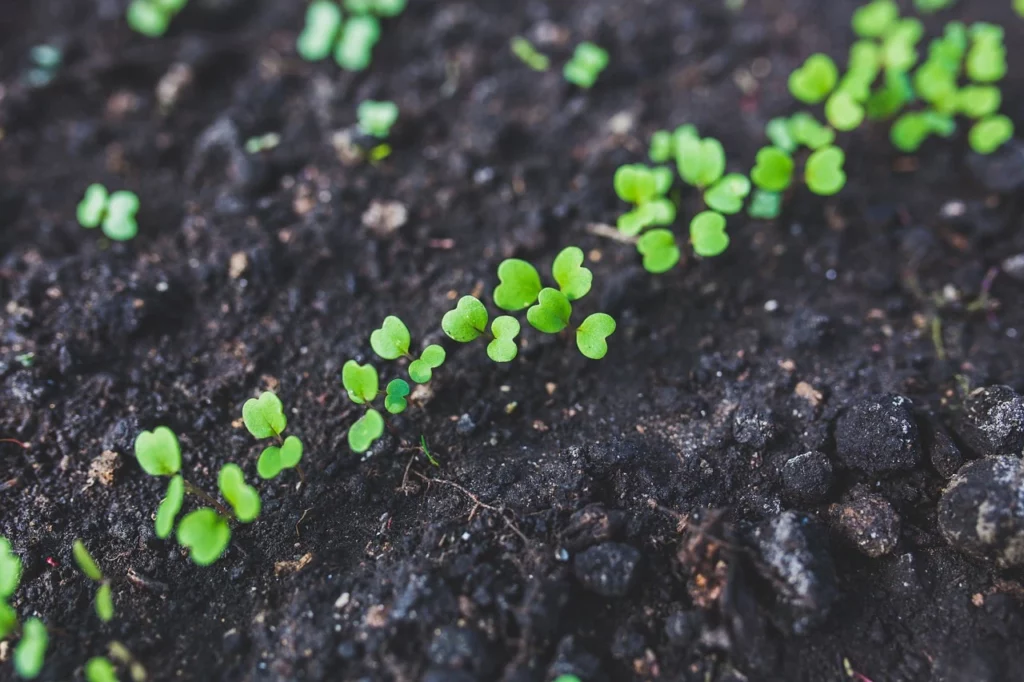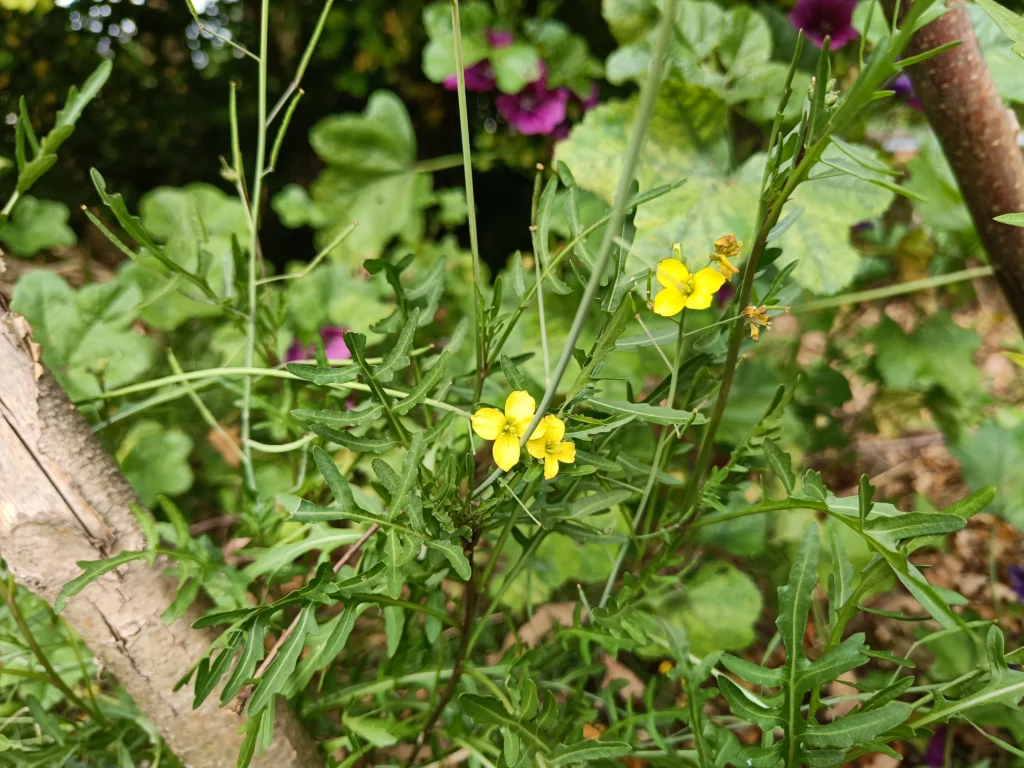Arugula is one of the simplest crops of all. Whether in the garden or on the balcony, the undemanding rocket feels at home almost anywhere. With its nutty, pungent aroma, the salad and seasoning plant enriches many Mediterranean dishes. How you can grow the salad rocket and its wild relatives yourself, you will learn in this article.
- At a glance
- Light: sunny to semi-shady
- Water: even soil moisture
- Nutrient requirements: low
- Soil: loose and humus
- Germination temperature: salad rocket 10 – 20 °C, wild rocket 14 – 20 °C
- Sowing depth: 1 cm
- Row spacing: 15 – 20 cm
- Planting distance: 10 cm (only for perennial wild rocket)
- Good neighbors: strawberries, carrots, lettuce, celery, onions and marigolds.
- Bad neighbors: related species such as cabbage, radish, radish or mustard.
Contents
- 1 General information about arugula
- 2 What is the difference between rocket and arugula?
- 3 Arugula varieties
- 4 Salad rocket
- 5 Wild Rocket
- 6 Location and soil
- 7 Sowing and planting arugula
- 8 Mixed cultivation and crop rotation with rocket
- 9 Care arugula
- 10 Diseases in arugula
- 11 Harvest and process arugula
- 12 Overwintering and propagation
- 13 Author
General information about arugula
Arugula (Eruca sativa) belongs to the cruciferous family (Brassicaceae) and is also known as salad rocket or garden mustard. Unlike the related wild rocket, salad rocket is an annual and must always be reseeded. Originally from the Mediterranean region, the herb was already popular with the Romans as a salad and seasoning plant. Rocket owes its characteristic, slightly pungent taste to the mustard oil glycosides it contains. They make the leaves spicy, strengthen our immune system and have an antibacterial effect. In addition, arugula contains plenty of folic acid, vitamin C and minerals such as potassium, iron and calcium. So with rocket, you’re not only adding flavor, but also important nutrients to your salad mix.
What is the difference between rocket and arugula?
Often, salad rocket (Eruca sativa) is confused with wild rocket (Diplotaxis tenuifolia). Both originate from the Mediterranean region and are sold commercially as rocket. However, they are two different species: the conventional salad rocket is annual and much milder in taste than its wild relative. The wild rocket also belongs to the cruciferous family, but grows perennially and is often sold under the name perennial rocket. It therefore likes to find its place in perennial beds. The wild form has smaller, more serrated leaves. It also produces yellow flowers instead of white. It is now widespread almost worldwide and often colonizes roadsides as a pioneer plant. In the care and the location requirements, the two species differ little, in the following, therefore, often the general term ‘arugula’ is used!
Arugula varieties
Salad rocket
The varieties of salad rocket hardly differ. For example, ‘Ruca’, a fast-growing variety with a nutty flavor, is well-known. It comes in a pointed-leaved and broad-leaved variation, depending on preference. The ‘Bologna’ variety is a cross between lettuce and wild rocket. It is fast growing and convinces with a balanced, nutty and spicy aroma. ‘Coltivata’ is a broad-leaved and robust variety that is very popular in Italy because of its good aroma.
Wild Rocket
The vigorous wild rocket now also has a few cultivars to offer. ‘Dragons Tongue’ is a robust variety from England in which the leaf veins turn slightly reddish. Venicia’ is a fast-growing variety with late flowering. It can be harvested for a particularly long time and gives good yields. The variety ‘Napoli’ grows fast and forms particularly broad leaves, it is probably a hybrid of lettuce and wild rocket.
Location and soil
Arugula is relatively undemanding as a low grower and grows in sunny or semi-shady places in the bed or on the balcony. It prefers a humus-rich soil, which may be sandy or loamy. If you don’t already know, you can quickly find out what kind of soil you have in your garden with our simple soil test. Arugula has no particular nutrient requirements, so it’s more like the related radishes than the high-yielding cabbages. However, because salad rocket forms relatively shallow roots, sufficient moisture is essential. Incorporating compost before sowing increases the soil’s water retention while providing adequate nutrients throughout its growth. Wild rocket is less sensitive to drought due to its deep taproot.

Sowing and planting arugula
Outdoors, salad rocket can be sown in rows 15-20 cm apart from April to September. The same applies to wild rocket, but here it should be sown no later than August. When planting seedlings, keep a distance of 10 cm between perennials. Loosen the soil properly before sowing and work some mature compost into the surface of the soil. Then make furrows about one centimeter deep and distribute the seeds within the row. Close the rows, tap the soil lightly, and water the seeding evenly. Early sowings in April should be covered with a fleece, as arugula only germinates reliably from a soil temperature of 10 °C (salad rocket) or 14 °C (wild rocket). At an optimum temperature of 20 °C, the seedlings grow quickly so that they can be harvested after only six weeks. If you have a greenhouse or cold frame available, you can start sowing seeds as early as March. Alternatively, you can plant the first seeds in pots on the windowsill. Since the salad rocket forms relatively shallow roots, it is super suitable for cultivation in balcony boxes. Despite the taproot, wild rocket can also be cultivated very well in pots.
Mixed cultivation and crop rotation with rocket
As a representative of the cruciferous family, arugula should not be planted next to related species such as cabbage, radish, radish or mustard. Sow and plant arugula only where no other cruciferous plants have grown before. A growing season of three to four years is usually recommended for cruciferous crops. Annual salad arugula makes an excellent gap-filler because of its short growing season and small space requirements. Good neighbors include strawberries, carrots, lettuce, celery, onions and marigolds.
Care arugula
Arugula is one of the low-maintenance crops in the garden. Above all, make sure that the soil is evenly moist, as the leaves can quickly become too sharp during prolonged dry periods. Regular hoeing or mulching will keep your bed free of unwanted weeds. You should thin out rows that are sown too densely to a distance of two to three centimeters between the seedlings. Since salad rocket is a weak grower, you do not need to worry about additional fertilization. An application of compost during bed preparation is quite sufficient here. For the perennial wild rocket, a compost application in spring is sufficient. The wild rocket is very eager to bloom and hardly sprouts new leaves in this condition. However, by cutting off the inflorescences, the plant can soon develop leaves again. Annual salad rocket, on the other hand, is hard to stop this process because flowering completes its development cycle for that year.
Diseases in arugula
Arugula is relatively hardy to pests and usually does not pose a major challenge. In dry years, ground fleas can make a mess of the plants. They nibble on the leaves and leave small, round holes. Make sure the soil does not dry out and water the plants abundantly from time to time. Also, avoid other cruciferous plants such as kohlrabi, cabbage, radish or radish as direct neighboring plants. When growing in a raised bed, your rocket should be relatively safe from pests. In the greenhouse, downy mildew infestation can sometimes occur. Therefore, make sure to ventilate regularly, especially in summer.
Harvest and process arugula
Annual arugula plants grow quickly and can be harvested as soon as four to six weeks after sowing. Begin harvesting when the leaves are about ten inches long. For lettuce, harvest primarily the young leaves. Over time, the leaves store more and more mustard oil glycosides, becoming much more pungent and should be used sparingly. Cut your salad arugula about three inches above the ground, and the plant will resprout up to three times. Once arugula goes into bloom, the leaves become very pungent and are hardly suitable as a salad ingredient. However, you can dry them, chop them up and use them in your Mediterranean spice collection. The aroma harmonizes well with pizza, pasta or meat dishes. Of course, arugula tastes finest fresh, but when wrapped in a damp cloth, the leaves will keep for two to three days in the refrigerator. Fresh arugula should not be heated for too long, as this will cause the aromatic essential oils to volatilize. Garnish pizza, pasta and flatbreads with the spicy greens only after baking. If you ever harvest more than you can use, you can make a delicious arugula pesto. Simply puree the leaves with plenty of olive oil, salt, garlic, pine or sunflower seeds and Parmesan/Pecorino cheese – depending on your taste. Arugula can also be frozen, but the consistency will suffer. So only freeze the leaves if you want to puree them later for soups, smoothies or spreads.
Overwintering and propagation
Lettuce rocket is easily propagated by seed. The plant quickly grows into bushy rosettes, forms flowers and eventually seeds. Rocket can self-seed very easily. This means it will reseed itself in the bed on its own. If this doesn’t bother you, you can save yourself the trouble of collecting seeds and let the plant do the sowing for you. On the other hand, it is also very easy to obtain your own seeds: Cut off the fully ripened, brown seed stalks and dry them again. Then you can thresh them out and store the seeds in a dark, cool and dry place until sowing next season. Perennial wild rocket can remain in the bed through the winter; it is hardy. Cut off the old inflorescences in early spring. The perennials sprout early in the year when temperatures are favorable, so they can be harvested before the first seedlings are ready for harvest. They also seed easily in the bed, and the seedlings can be transplanted in the early stages. Seed collection works the same way as with salad rocket.


